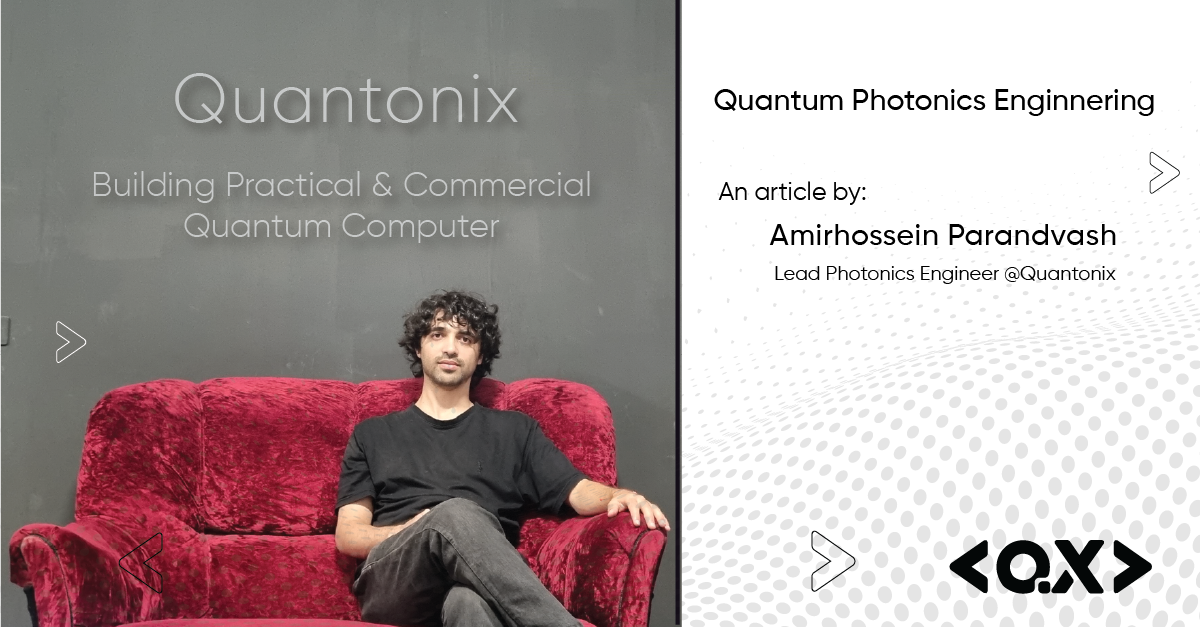
Quantum Photonics Engineering
Introduction
Quantum photonics engineering is a fast developing subject at the confluence of quantum mechanics and photonics that aims to use the unique features of quantum states of light for a wide range of innovative applications. This discipline has the potential to transform computing, communication, sensing, and metrology by allowing innovations that overcome the constraints of traditional systems. As we dig into the complexities of quantum photonics engineering, we’ll look at its fundamental concepts, present developments, career opportunities, prerequisites, and future possibilities.
Understanding Quantum Photonics
Quantum photonics is a multidisciplinary area that seeks to alter and control light at the quantum level. This insight is critical for creating new technologies that take use of the distinct features of quantum states of light. Here, we will go further into the underlying concepts and principles that drive quantum photonics.
Quantum States of Light
Quantum photonics is based on quantum states of light, which display behaviors that classical light cannot. This includes:
- Coherent States: Like classical light, coherent states have well-defined phase and amplitude. Standard lasers produce them, and they are the closest quantum analogs to classical light waves.
- Fock States (Number States): These states have a predetermined number of photons, with no uncertainty in photon number but maximum uncertainty in phase. Single-photon sources aim to generate Fock states using a single photon (|1⟩ state).
- Entangled States: In entangled states, one photon’s properties are linked to those of another, regardless of their distance. This phenomenon, known as quantum entanglement, is critical to quantum communication and computing.
- Squeezed States: These states reduce quantum uncertainty in one attribute (e.g., phase or amplitude) while increasing uncertainty in the conjugate. Squeezed states are useful for precise measurements and quantum sensing.
Key Components of Quantum Photonics Engineering
1. Quantum Light Sources
Quantum photonics is based on the creation of single photons or entangled photon pairs. Quantum dots, spontaneous parametric down-conversion (SPDC), and four-wave mixing are popular methods for creating these quantum states of light.
2. Photon Detection
It is crucial to detect single photons efficiently and with little noise. This goal is achieved by using advanced photodetectors such as superconducting nanowire single-photon detectors (SNSPDs) and avalanche photodiodes (APDs).
3. Quantum Interference Devices
Interferometers, such as the Mach-Zehnder and Hong-Ou-Mandel interferometers, are required for detecting quantum interference. These devices examine quantum phenomena by manipulating photons’ route and phase.
4. Quantum Logic Gates
Quantum gates use photons to operate on quantum bits (qubits). These gates, which can be implemented via linear optics or nonlinear interactions, serve as the foundation for quantum circuits and computers.
Career Opportunities in Quantum Photonics Engineering
As the science of quantum photonics expands, so will the career opportunities for experienced workers. Listed below are some major positions and their typical requirements:
1. Quantum Photonics Engineer
Responsibilities:
- Design and fabricate quantum photonic devices and systems.
- Conduct experiments to evaluate and validate quantum photonic components.
- Collaborate with cross-functional teams to incorporate quantum photonics into larger technologies.
Requirements:
- Ph.D. in Physics, Electrical Engineering, Photonics, or a related discipline.
- Experience in quantum optics, quantum mechanics, and photonic device fabrication.
- Proficiency with experimental methodologies and data analysis.
- Strong problem-solving abilities and the capacity to collaborate in a team setting.
2. Quantum Software Developer
Responsibilities:
- Develop software algorithms for quantum photonic devices.
- Optimize quantum algorithms for specific applications like quantum computing and communication.
- Collaborate with hardware engineers to guarantee proper software and hardware integration.
Requirements:
- A bachelor’s or master’s degree in computer science, physics, or a related subject.
- Understanding of quantum computing ideas and programming languages (e.g., Qiskit, Cirq).
- Experience with traditional programming languages like Python, C++, and Java.
- Excellent analytical and coding skills.
3. Quantum Research Scientist
Responsibilities:
- Conduct cutting-edge research in quantum photonics.
- Publish your findings in scientific journals and give presentations at conferences.
- Secure financing via grants and collaborative projects.
Requirements:
- Ph.D. in physics, photonics, or a closely related field.
- Strong publishing history in quantum photonics or related disciplines.
- Experience with experimental and theoretical research methods.
- Excellent communication and presenting skills.
Future Prospects and Challenges
The future of quantum photonics engineering is full of possibilities, but it also presents significant obstacles. Scaling up quantum systems to handle additional qubits and photons while maintaining coherence and avoiding mistakes presents a considerable challenge. Another current problem is to include quantum photonic components into systems that are compact, dependable, and cost-effective.
Nonetheless, the discipline is quickly evolving, owing to advances in material science, nanofabrication, and optical engineering. Collaboration among academia, industry, and government agencies encourages innovation and speeds up the transition from theoretical research to practical applications.
My view as a quantum photonics engineer
Quantum photonics engineering is at the vanguard of a technological revolution that promises to change computers, communication, and sensing. This field brings up new opportunities for accomplishing feats that were previously deemed unattainable by leveraging light’s quantum qualities. As research and development progresses, quantum photonics will surely play an important role in determining the future of technology and science. The expanding demand for qualified experts in this industry creates exciting employment prospects for those with the necessary knowledge and expertise, paving the way for the next wave of innovation.


